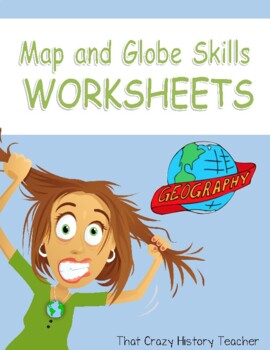Map & Globe Skills Worksheet GSE Map Skills 1-11
- PDF
What educators are saying
Description
Sometimes you just need a worksheet. These worksheets are great for the beginning of the year when you are reviewing map skills and introducing new skills. They are alos great when you have a substitute teacher. These worksheets do not assume prior knowledge of a subject. Definitions, examples and instructions are included for each concept. This packages contains 37 pages in all: 20 pages of worksheets, 14 pages of answers keys, a title page, a contents page, and a reference page. All worksheets are in grayscale for easy copying. Skills covered are:
Social Studies Georgia Standards of Excellence
Georgia Department of Education
Map and Globe Skills
1. use a compass rose to identify cardinal directions
2. use intermediate directions
3. use a letter/number grid system to determine location
4. compare and contrast the categories of natural, cultural, and political features found on maps
5. use graphic scales to determine distances on a map
6. use map key/legend to acquire information from historical, physical, political, resource, product, and economic maps
7. use a map to explain impact of geography on historical and current events
8. draw conclusions and make generalizations based on information from maps
9. use latitude and longitude to determine location
10. compare maps of the same place at different points in time and from different perspectives to determine changes, identify trends, and generalize about human activities
11. compare maps with data sets (charts, tables, graphs) and /or readings to draw conclusions and make generalizations
Bonus: The 5 Themes of Geography





